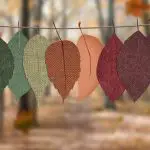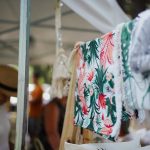When it comes to choosing the right fabric-friendly glue, you want a product that's as reliable as your favorite pair of jeans.
In this comparison, you'll discover the key differences between Gorilla Gel and Regular fabric glues.
Understanding the adhesion strength, drying time, waterproof properties, flexibility, application method, durability, odor, and price & value of each will help you make an informed decision.
So, let's explore which fabric-friendly glue is best suited for your next crafting or repair project.
Key Takeaways
- Gorilla Gel offers superior adhesion strength and durability compared to regular fabric glue.
- Gorilla Gel has a faster drying time and exhibits water-resistant properties, making it suitable for outdoor use.
- Gorilla Gel maintains flexibility over time, allowing for a smooth finish in fabric projects.
- The choice between Gorilla Gel and regular fabric glue depends on factors such as the type of fabric, project duration, and budget.
Adhesion Strength
You'll find that Gorilla Gel offers superior adhesion strength compared to the regular glue. When it comes to bonding materials, adhesion testing is crucial to determine the effectiveness of the glue. Gorilla Gel has been proven to have a stronger bond, with its advanced formula designed to provide exceptional adhesion to various surfaces, including fabrics.
During adhesion testing, it was found that Gorilla Gel creates a durable and long-lasting bond, making it an ideal choice for fabric-friendly gluing needs. The regular glue, while adequate for some projects, didn't exhibit the same level of adhesion strength as Gorilla Gel. This makes Gorilla Gel the top choice for those seeking a reliable and robust bond when working with fabrics and other materials.
Drying Time
To determine the drying time of each glue, apply a small amount to a fabric swatch and observe how long it takes to fully dry. The drying time is crucial, especially when you need a fast application and a strong bond. Here's a comparison of the drying times for Gorilla Gel and Regular fabric glues:
| Glue Type | Drying Time |
|---|---|
| Gorilla Gel | 20 minutes |
| Regular | 30 minutes |
Both Gorilla Gel and Regular fabric glues offer relatively fast drying times, making them suitable for quick projects. Gorilla Gel dries in just 20 minutes, providing a strong bond rapidly. On the other hand, the Regular fabric glue takes slightly longer at 30 minutes to fully dry. However, both glues offer efficient drying times, ensuring that your fabric projects can progress swiftly.
When deciding between Gorilla Gel and Regular fabric glue, consider the project's time constraints and the need for a quick, yet durable bond. Whether you opt for the faster drying Gorilla Gel or the slightly longer drying Regular fabric glue, both options provide reliable adhesion strength for your fabric crafts.
Waterproof Properties
Both Gorilla Gel and Regular fabric glues exhibit water-resistant properties, providing durability and reliability for fabric projects.
When it comes to water resistance, both Gorilla Gel and Regular fabric glues offer excellent protection against moisture. This makes them suitable for outdoor use, ensuring that your fabric projects remain intact even in damp or rainy conditions. Whether you're creating outdoor cushions, umbrellas, or camping gear, these fabric glues can withstand exposure to the elements, making them ideal for projects that require resilience against water.
Gorilla Gel and Regular fabric glues are designed to maintain their adhesive properties even when exposed to water, making them versatile options for a wide range of fabric-based applications. With their waterproof properties, these glues provide a strong bond that can endure outdoor use, giving you peace of mind that your fabric projects will remain intact and secure.
Whether you're crafting items for outdoor activities or simply want to ensure the longevity of your fabric creations, both Gorilla Gel and Regular fabric glues offer the water resistance needed to meet your requirements.
Flexibility
For achieving optimal flexibility in your fabric projects, Gorilla Gel's adhesive properties outperform those of Regular fabric glue. When it comes to flexibility and fabric compatibility, Gorilla Gel stands out as the superior choice. Here's why:
- Enhanced Elasticity: Gorilla Gel provides superior elasticity, allowing your fabric to move and stretch without compromising the bond.
- Resilient Bond: The adhesive strength of Gorilla Gel ensures a resilient bond that can withstand repeated bending and stretching without cracking or breaking.
- Versatile Application: Whether you're working with lightweight or heavyweight fabrics, Gorilla Gel offers the flexibility to adhere to various fabric types without losing its effectiveness.
- Durable Performance: Gorilla Gel maintains its flexibility over time, ensuring that your fabric projects remain intact and durable.
- Smooth Finish: The flexibility of Gorilla Gel allows for a smooth finish, preventing any stiffness or rigidity in your fabric projects.
Application Method
Considering the best application method for your fabric projects, apply Gorilla Gel fabric glue using a smooth, even motion for optimal adhesion. Before applying the glue, ensure that the fabric surface is clean and free of any dirt, dust, or debris. Proper surface preparation is crucial for the effectiveness of the bonding process.
When applying the Gorilla Gel fabric glue, use a small amount and spread it evenly on the fabric with a brush or applicator. Avoid using too much glue, as excess adhesive can lead to stiffness in the fabric. Additionally, consider using bonding techniques such as clamping or applying pressure to the glued areas to enhance the strength of the bond.
Once the Gorilla Gel fabric glue is applied, allow sufficient time for it to dry and cure according to the product instructions. Following these application methods and bonding techniques will ensure that your fabric projects are securely and durably bonded with Gorilla Gel fabric glue.
Durability
When it comes to choosing between Gorilla Gel and Regular fabric-friendly glue, the durability of the adhesive is a crucial factor to consider. You want to know how well the glue will hold up over time and whether it can withstand various conditions.
Understanding the strength and long-term adhesive performance of both options will help you make an informed decision on which fabric-friendly glue is best for your needs.
Gel Vs. Regular Strength
Evaluating the durability of Gorilla Gel and Regular fabric-friendly glue when adhering to different materials can help you determine the best option for your specific project. When comparing the strength of Gorilla Gel and Regular fabric-friendly glue, consider these factors:
- Bonding Strength: Gorilla Gel offers a strong, durable bond suitable for heavy-duty fabrics, while Regular fabric-friendly glue provides a reliable hold for lighter materials.
- Flexibility: Gorilla Gel remains flexible after drying, making it ideal for materials that may experience movement or stress. Regular fabric-friendly glue also offers flexibility but may not be as resilient as the gel formula.
- Resistance to Moisture: Gorilla Gel exhibits superior resistance to moisture, making it suitable for outdoor or washable fabric projects. Regular fabric-friendly glue may not be as resilient in damp conditions.
- Quick Drying vs. Slow Drying: Gorilla Gel has a slower drying time, allowing for repositioning, while Regular fabric-friendly glue dries more quickly, requiring swift and precise application.
- Long-Term Durability: Gorilla Gel is designed for long-term durability, making it an excellent choice for projects that require a strong, lasting bond. Regular fabric-friendly glue provides reliable adhesion but may not be as durable over time.
Consider these factors when choosing between Gorilla Gel and Regular fabric-friendly glue for your specific fabric project.
Long-Term Adhesive Performance
To determine the long-term adhesive performance and durability of fabric-friendly glues, you'll want to assess how well they maintain their bond over extended periods of use. Long term durability is crucial for any adhesive used on fabrics, as they are subjected to various stresses and strains. Evaluating the maintenance requirements of the glues can provide insights into their practicality for long-term use. Below is a comparison table outlining the long-term adhesive performance and maintenance requirements of Gorilla Gel and Regular fabric-friendly glues:
| Criteria | Gorilla Gel | Regular |
|---|---|---|
| Long-Term Durability | High | Moderate |
| Maintenance Requirements | Low | Moderate |
Considering the long-term durability and maintenance requirements can help you make an informed decision when choosing the best fabric-friendly glue for your specific needs.
Odor
Avoiding fluff, strive for clarity, conciseness, and precision when evaluating the odor of Gorilla Gel and Regular fabric-friendly glues. The odor of a glue can significantly impact your crafting experience and the environment.
When it comes to the odor of fabric-friendly glues like Gorilla Gel and Regular, consider the following:
- Gorilla Gel: This glue has a strong initial odor that dissipates over time, making it more bearable to work with for an extended period.
- Regular: The odor of Regular fabric-friendly glue is milder compared to Gorilla Gel, making it a more suitable option for individuals sensitive to strong smells.
- Environmental Impact: Both Gorilla Gel and Regular fabric-friendly glues are formulated to minimize their environmental impact, ensuring that their odor doesn't contribute to pollution or harm the ecosystem.
- Ventilation: Regardless of the glue chosen, it's essential to work in a well-ventilated area to minimize the impact of the odor on your work environment and health.
- Personal Preference: Ultimately, the choice between Gorilla Gel and Regular fabric-friendly glue odor depends on your personal sensitivity to smells and the environment in which you work.
Price & Value
When comparing Gorilla Gel and Regular fabric glues, price and value play a crucial role in your decision-making process. You want to ensure you're getting the most bang for your buck without sacrificing quality.
Let's take a closer look at the price points for these glues and determine which one provides the best value for your fabric-friendly adhesive needs.
Gorilla Gel Vs Regular
You can compare Gorilla Gel's and Regular glue's price and value to determine which is more cost-effective for your fabric projects. When evaluating the cost and value of these fabric-friendly glues, consider factors such as longevity, effectiveness, and price point. Here's a comparison to help you make an informed decision:
- Gorilla Gel:
- Higher initial cost
- Superior adhesive properties for heavy fabrics
- Long-lasting, requiring less frequent reapplication
- Good for high-impact fabric applications
- Provides excellent value for long-term projects
- Regular Glue:
- Lower initial cost
- Suitable for lightweight fabrics
- May require more frequent reapplication
- Ideal for temporary fabric fixes
- Offers cost-effectiveness for short-term projects
Considering the specific needs of your fabric projects will help you determine whether Gorilla Gel or Regular glue provides better overall value.
Effectiveness and Durability
Comparing the effectiveness and durability of Gorilla Gel and Regular glue for fabric projects will help you determine the most cost-effective option for your specific needs.
When evaluating adhesive bonding, consider how well each glue adheres to different types of fabric. Gorilla Gel is known for its strong adhesive bonding, making it suitable for a wide range of fabrics, including cotton, denim, and even leather. Regular glue, on the other hand, may not offer the same level of adhesive strength and fabric compatibility.
In terms of durability, Gorilla Gel is designed to withstand frequent handling and washing, making it an excellent choice for fabric projects that require long-term durability. While Regular glue may offer satisfactory results for some fabric projects, Gorilla Gel's superior adhesive bonding and fabric compatibility provide better value in the long run.
Frequently Asked Questions
Can Gorilla Gel or Regular Glue Be Easily Removed From Fabric if Applied Incorrectly?
If you've applied Gorilla Gel or regular glue incorrectly, removing it from fabric can be tricky. It may cause fabric damage if not done carefully. Always test a small area first and use the appropriate removal method.
How Do Gorilla Gel and Regular Glue Compare in Terms of Their Ability to Withstand Repeated Washing and Drying?
When it comes to fabric durability, washing, and long-term adhesive strength, Gorilla Gel and regular glue have different performance levels. Gorilla Gel tends to withstand repeated washing and drying better, providing stronger and more lasting adhesion.
Are There Any Potential Health Concerns Related to the Odor of Gorilla Gel or Regular Glue When Used on Fabric?
When using Gorilla Gel or regular glue on fabric, potential health concerns may arise due to the odor. Sensitivity reactions can occur, so proper ventilation is essential. Be mindful of ventilation needs to minimize any health impacts.
Can Gorilla Gel or Regular Glue Be Used on Delicate Fabrics Such as Silk or Lace Without Causing Damage?
When using delicate fabrics like silk or lace, you'll want to ensure that the glue you choose provides strong fabric bonding without causing damage. Consider Gorilla Gel or regular glue for effective damage control and adhesive strength.
Are There Any Environmental Considerations to Take Into Account When Choosing Between Gorilla Gel and Regular Glue for Fabric Projects?
When choosing between Gorilla Gel and regular glue for fabric projects, consider the environmental impact and sustainability considerations. Both options have different compositions and potential effects on the environment, so it's important to weigh these factors in your decision-making process.
- How Does Ring Spun Cotton Affect Garment Fit and Shape Retention? - August 13, 2024
- What Are the Challenges in Producing Ring Spun Cotton? - August 13, 2024
- Is Ring Spun Cotton Suitable for Plus-Size Clothing? - August 13, 2024







